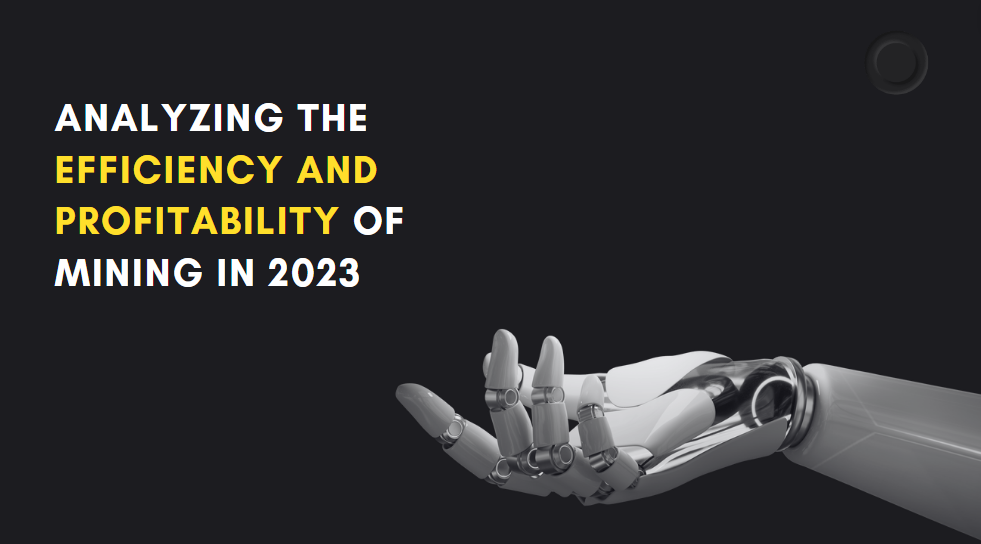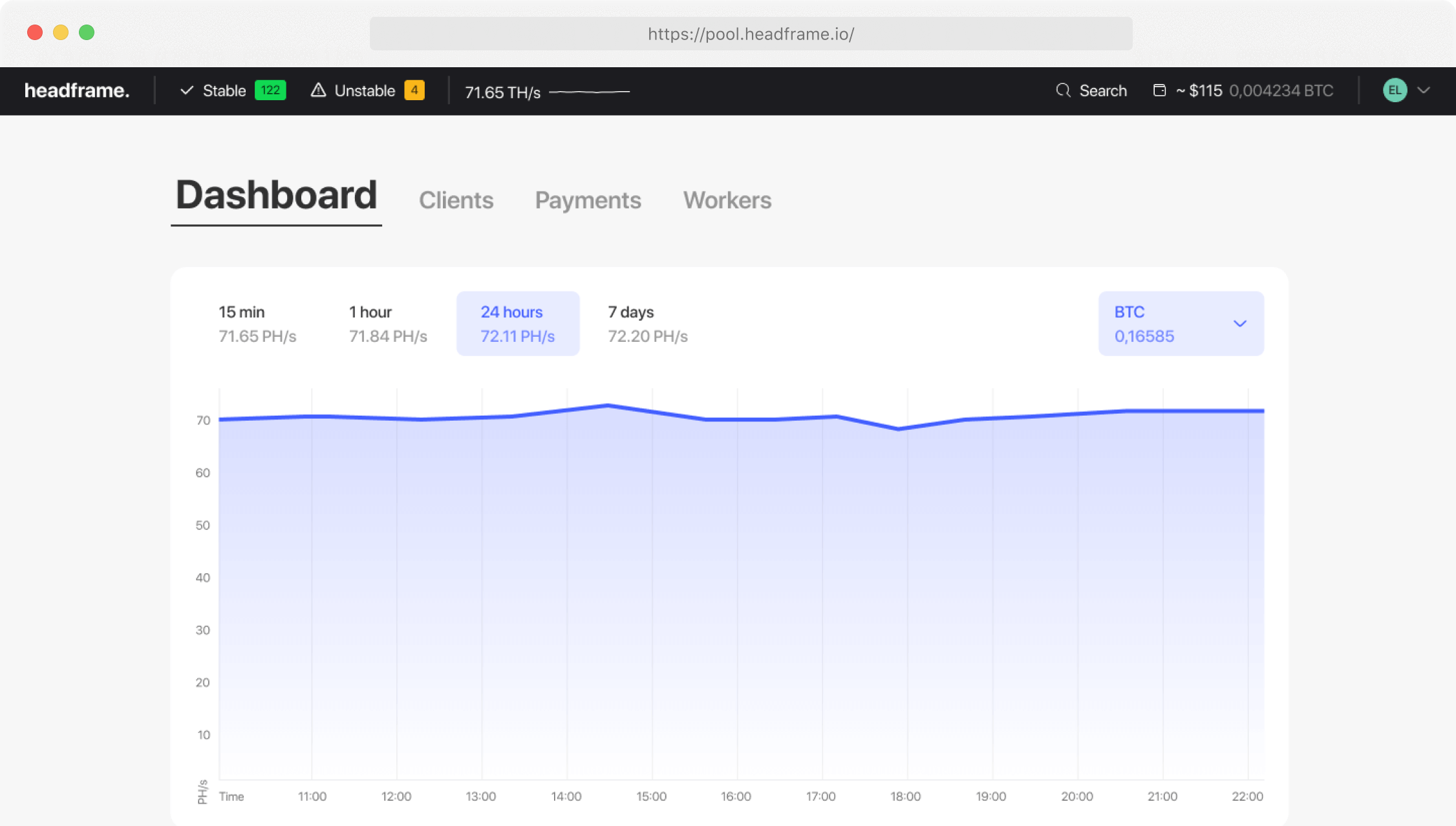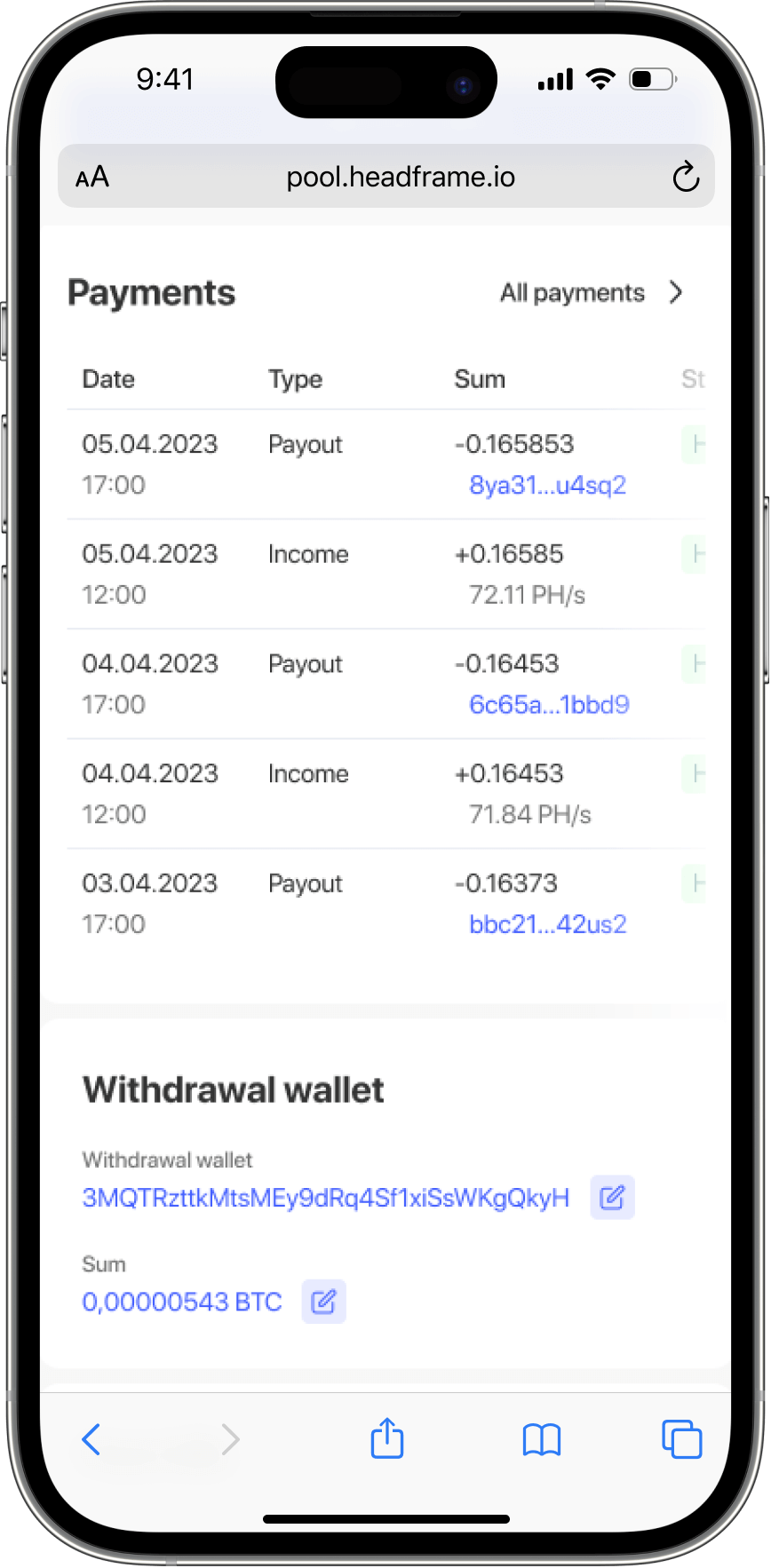
How long does a bitcoin mine: analyzing the efficiency and profitability of mining in 2023
- How long does it take to mine one Bitcoin?
- Bitcoin mining time: estimating the period in which you can earn 1 bitcoin
- How many ASICs are needed to create 1 bitcoin?
- In how much time will a video card make 1 bitcoin?
- How many coins have already been mined out of 21 million possible coins?
How much does one Bitcoin mine?
Earn more money with Headframe
Join a mining pool and get the best profitability in mining. Already more than 10,000 miners trust Headframe.
Bitcoin mining is a complex process that involves solving mathematical problems to add new blocks to the bitcoin blockchain. For their efforts, miners are rewarded in bitcoins. However, the time it takes to mine 1 bitcoin can vary greatly depending on several factors.
One bitcoin is produced approximately every ten minutes. However, this does not mean that an individual miner can mine 1 bitcoin every ten minutes. The probability of an individual miner winning the lottery is extremely low, which means that solo miners can go years without ever finding a block.
The reward for each block mined is currently around 6.25 BTC. However, the actual time it takes to mine 1 bitcoin is highly dependent on the hardware of the miner and the mining pool they join. If a miner does not have high-performance hardware such as an ASIC chip, it can take a long time to mine just one block.
In fact, small miners often don’t stand a chance against large companies for whom bitcoin mining is a core business. However, by joining a bitcoin mining pool, miners can pool their processing power with other pool members, which helps them solve problems faster and get bitcoins more efficiently
Bitcoin mining time: an estimate of the time it takes to earn 1 bitcoin
The time it takes to mine 1 bitcoin depends on several factors, including the power of the mining equipment, the current difficulty of mining bitcoin, and the miner’s participation in the mining pool.
Let’s look at an example calculation for an individual miner using standard mining equipment, such as the Antminer S19 Pro, with a hash rate of 110 TH/s.
- Determine the hash rate of the mining hardware. In our example, the Antminer S19 Pro has a hash rate of 110 TH/s.
- Find out the current bitcoin mining difficulty. This number adjusts roughly every two weeks to ensure that a new block is added to the blockchain on average every 10 minutes. You need to check a reliable source to get the current difficulty level.
- Calculate the miner’s share of the total hashrate. The total hashrate of the bitcoin network is currently around 150 EH/s, or 150,000,000,000 TH/s. If we assume that this value has remained roughly stable, the miner’s share of the total hashrate will be (110 TH/s) / (150,000,000,000 TH/s) = approximately 0.00000073.
- Calculate the expected time to mine 1 bitcoin. On average, a new block is added to the bitcoin blockchain every 10 minutes, and the current reward per block is 6.25 bitcoins. Thus, the expected time to mine 1 bitcoin would be (1 / (6.25 * 0.00000073)) * 10 minutes = approximately 216,000 minutes, or about 150 days.
How many ASICs are needed to create 1 bitcoin?
The number of ASIC miners needed to mine 1 bitcoin depends on the specific ASIC miner model and the current bitcoin mining difficulty.
How many ASICs are needed to create 1 bitcoin
To mine one bitcoin in a year, you will need to calculate the number of days in a year (365) and divide it by the time it takes to mine one bitcoin with one Antminer S19 Pro. For example, if the expected time to mine one bitcoin with one miner is 150 days, you will need approximately (365 / 150) = 2.43 miners, which rounds up to 3 miners.
Similarly, to mine one bitcoin in a month, you can use the number of days in a month (usually 30 or 31) and divide it by the time it takes to mine one bitcoin with one miner. Keep in mind, however, that these calculations are approximations, as the difficulty of mining and the hash rate of the Bitcoin network can change over time. In addition, they assume that all miners operate at the same efficiency and do not take into account additional costs such as electricity and equipment maintenance.
How long does it take for a video card to make 1 bitcoin?
Mining bitcoin using a video card (also known as GPU mining) is less efficient than mining using specialized ASIC hardware. However, you can still mine bitcoin using a video card, although the time it takes to mine 1 bitcoin can be significantly longer.
Let’s look at an example calculation for a miner using a powerful graphics card, such as the Nvidia GeForce RTX 3080, with a hash rate of about 100 MG/s (megahes per second), which is well below the hash rate of ASIC miners.
- Determine the hash rate of the mining video card. In our example, the Nvidia GeForce RTX 3080 has a hash rate of 100 MG/s.
- Find out the current bitcoin mining difficulty. Bitcoin mining difficulty changes regularly, and you should use current data from a reliable source. For example, the current difficulty may be around 20 trillion.
- Calculate the time it takes to mine 1 bitcoin on a video card. To do this, you must consider the hash rate of the video card, the current difficulty, and the reward per block. For example, if we assume that the Nvidia GeForce RTX 3080 graphics card mines 100 MG/s and the current difficulty is 20 trillion, the time to mine 1 bitcoin would be approximately (20 trillion) / (100 MG/s) = 200,000 seconds, or about 55.6 hours.
Now, to determine how many graphics cards will be needed to mine 1 bitcoin in a month or a year, we must consider the time it takes to mine 1 bitcoin and its reward per block. For example, if we assume that the time to mine 1 bitcoin is 55.6 hours and the current block reward is 6.25 bitcoins, then the number of graphics cards needed to mine 1 bitcoin in a month or year will depend on the number of hours in the month or year.
Suppose there are about 720 hours of work in a monthWe can use the time it takes to mine 1 bitcoin (55.6 hours) and the total number of hours of work in a month (720 hours) to determine how many graphics cards will be needed to mine 1 bitcoin in a month.
In this case, to mine 1 bitcoin for a month assuming 720 hours of work, we would need approximately (720 hours) / (55.6 hours) = about 12.95 video cards.
Similarly, to determine how many video cards it would take to mine 1 bitcoin in a year, we can use the total number of hours of work in a year. Let’s assume that there are 8760 hours of work in a year.
In this case, to mine 1 bitcoin for a year assuming 8760 hours of work, we would need approximately (8760 hours) / (55.6 hours) = about 157.91 video cards.
However, keep in mind that this is a simplified calculation and actual results may vary. The impact of bitcoin mining difficulty, electricity price and other factors should also be taken into account when determining the number of graphics cards needed to mine 1 bitcoin in a month or a year.
Please keep in mind that this is a simplified calculation and actual results may vary. The complexity of the Bitcoin network adjusts approximately every two weeks, and the overall hash rate can also change as miners join or leave the network. In addition, this calculation assumes that the miner is working independently rather than being a member of a mining pool, which can also affect the mining time of 1 bitcoin.
How many coins have already been mined out of a possible 21 million?
Bitcoin, the world’s first and most popular cryptocurrency, has a limited supply of 21 million coins. This limit was set by Bitcoin’s creator, Satoshi Nakamoto, and is a key feature of this cryptocurrency. The limited supply creates a shortage, which can increase the value of Bitcoin as demand increases.
As of the end of January 2023, about 19.3 million Bitcoins have been mined, which means that there are still about 1.7 million Bitcoins left to be mined. This means that over 91% of all Bitcoins that will ever exist have already been mined. Bitcoins are created through a process known as mining, where powerful computers perform complex calculations to secure the Bitcoin network and verify transactions. In exchange for their work, miners are rewarded in the form of new Bitcoins. This is how new Bitcoins enter circulation.
However, the rate at which new Bitcoins are created is not constant. Approximately every four years, an event known as “halving” occurs, where the reward for mining a new block is halved. This slows the rate at which new Bitcoins are created, meaning that the last Bitcoin won’t be mined until around 2140.
The reduced supply of new Bitcoins can affect their value. As fewer new coins are introduced, existing coins may become more valuable if demand remains strong. This scarcity is one of the reasons why Bitcoin is often compared to gold.
It’s also worth noting that while there are about 1.7 million Bitcoins left, they won’t all be mined quickly. As the reward for mining decreases with each half-mining event, mining Bitcoin becomes more difficult and less profitable. This could potentially slow the pace of Bitcoin mining in the future. In conclusion, while there are some Bitcoins left to mine, the supply is rapidly dwindling. This shortage, combined with the growing demand for Bitcoin, could potentially increase the value of this cryptocurrency in the future.


